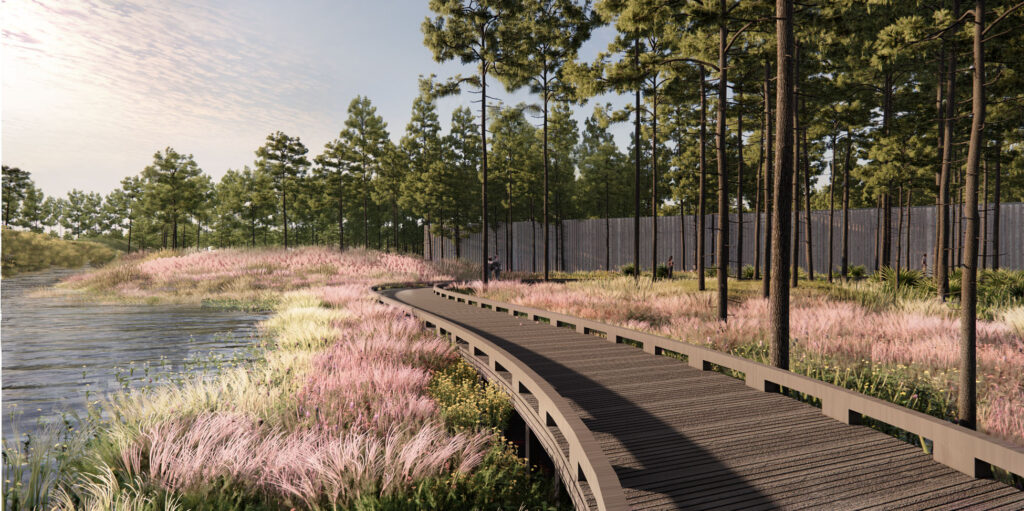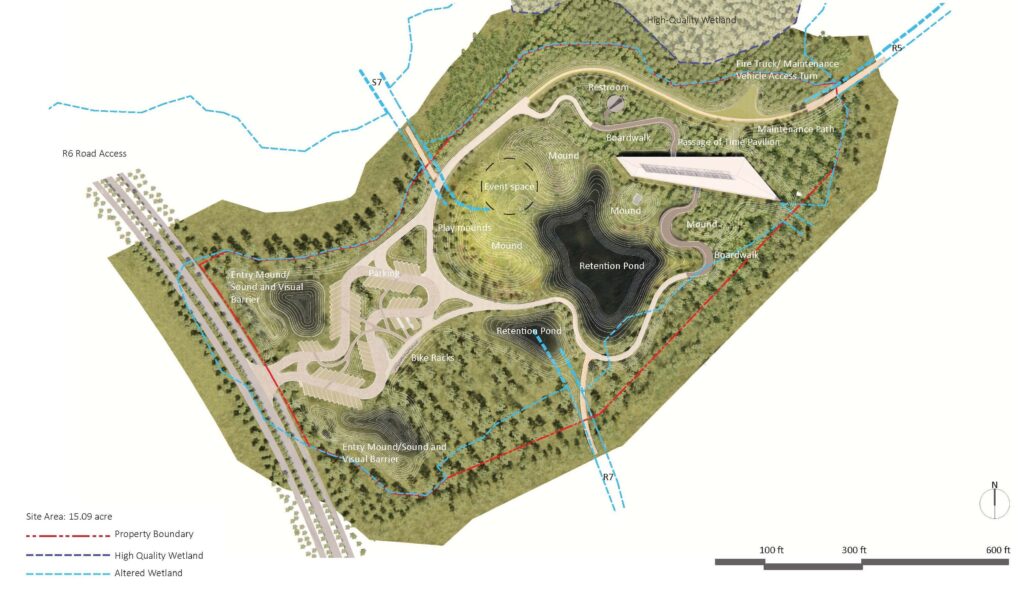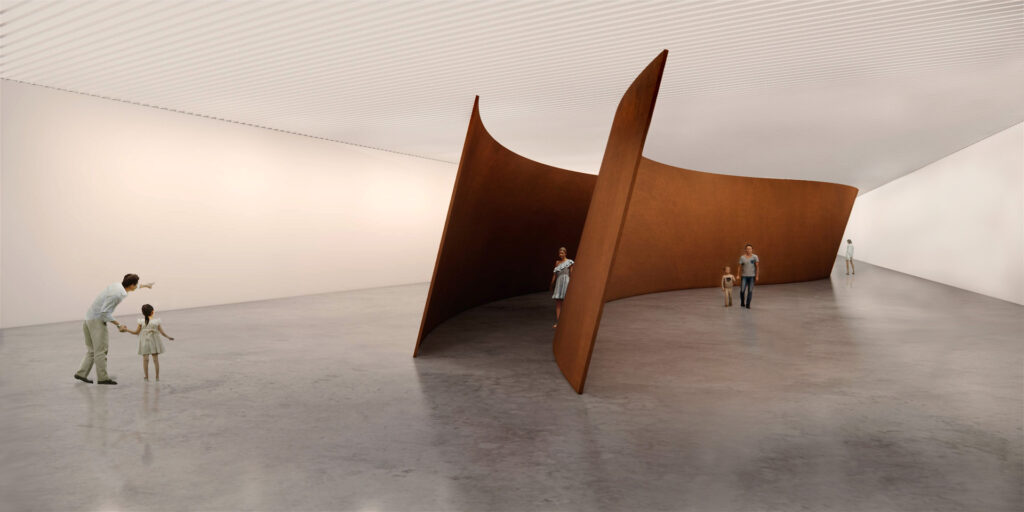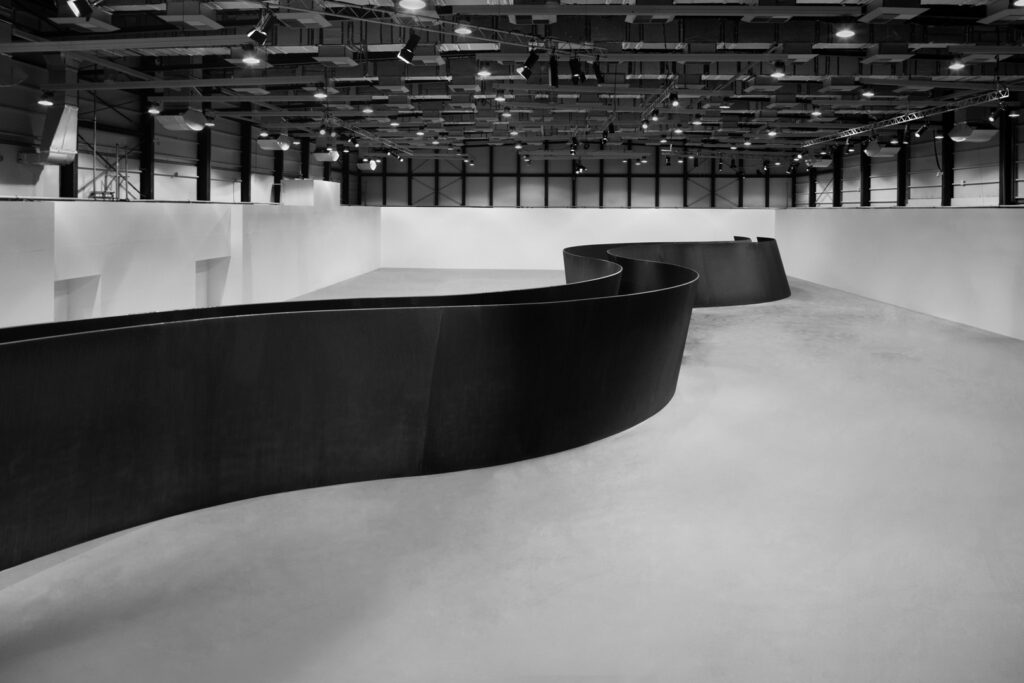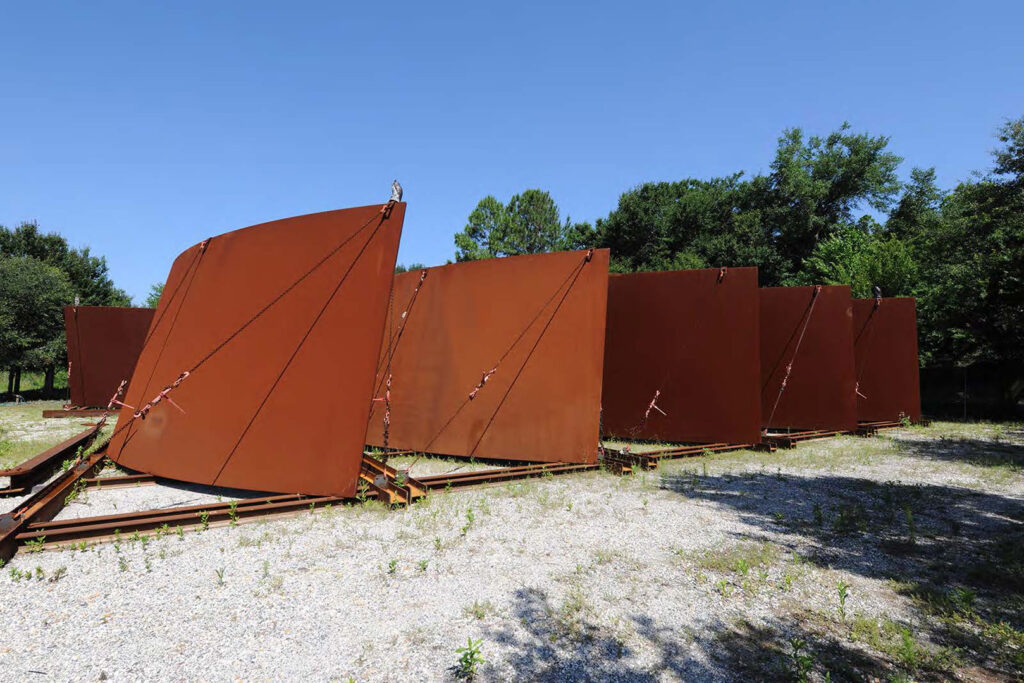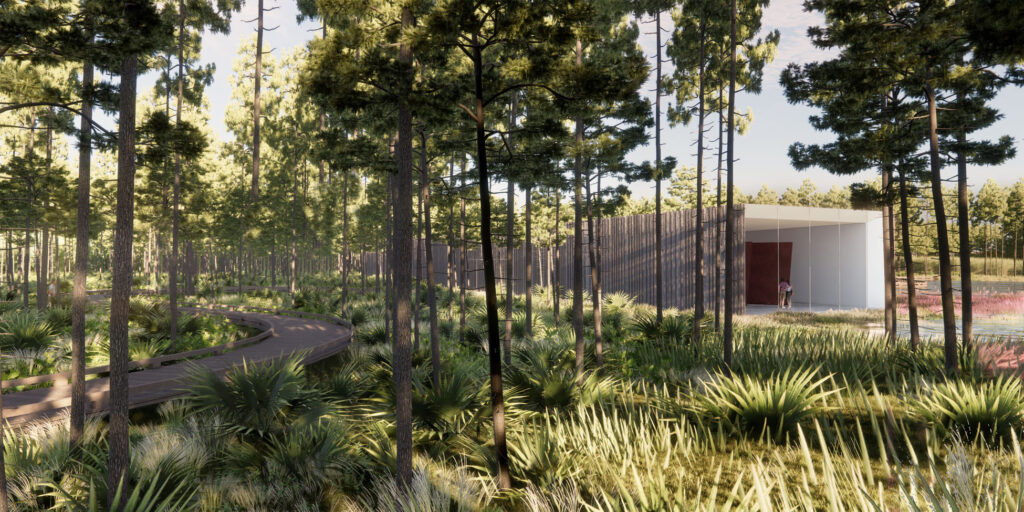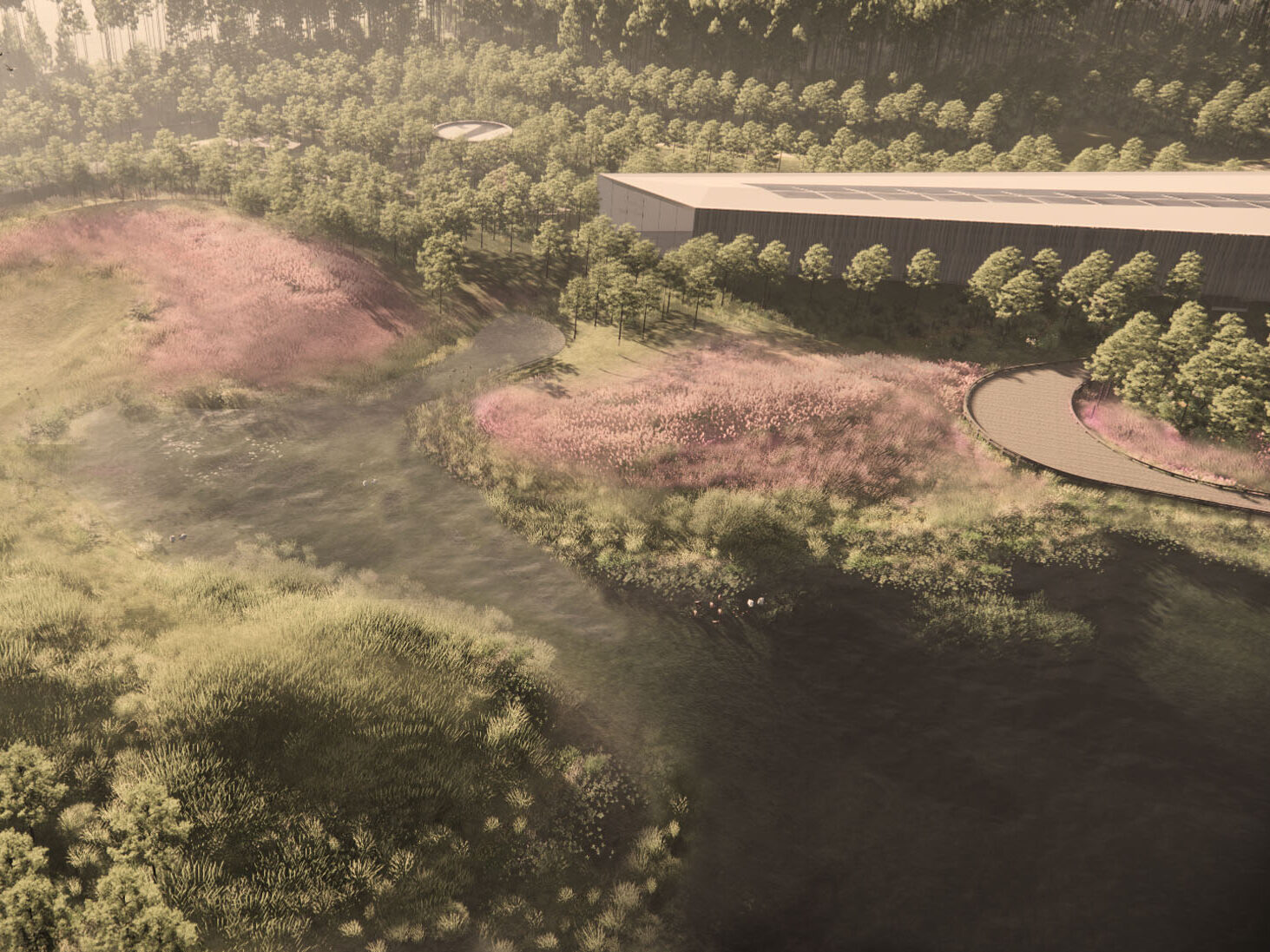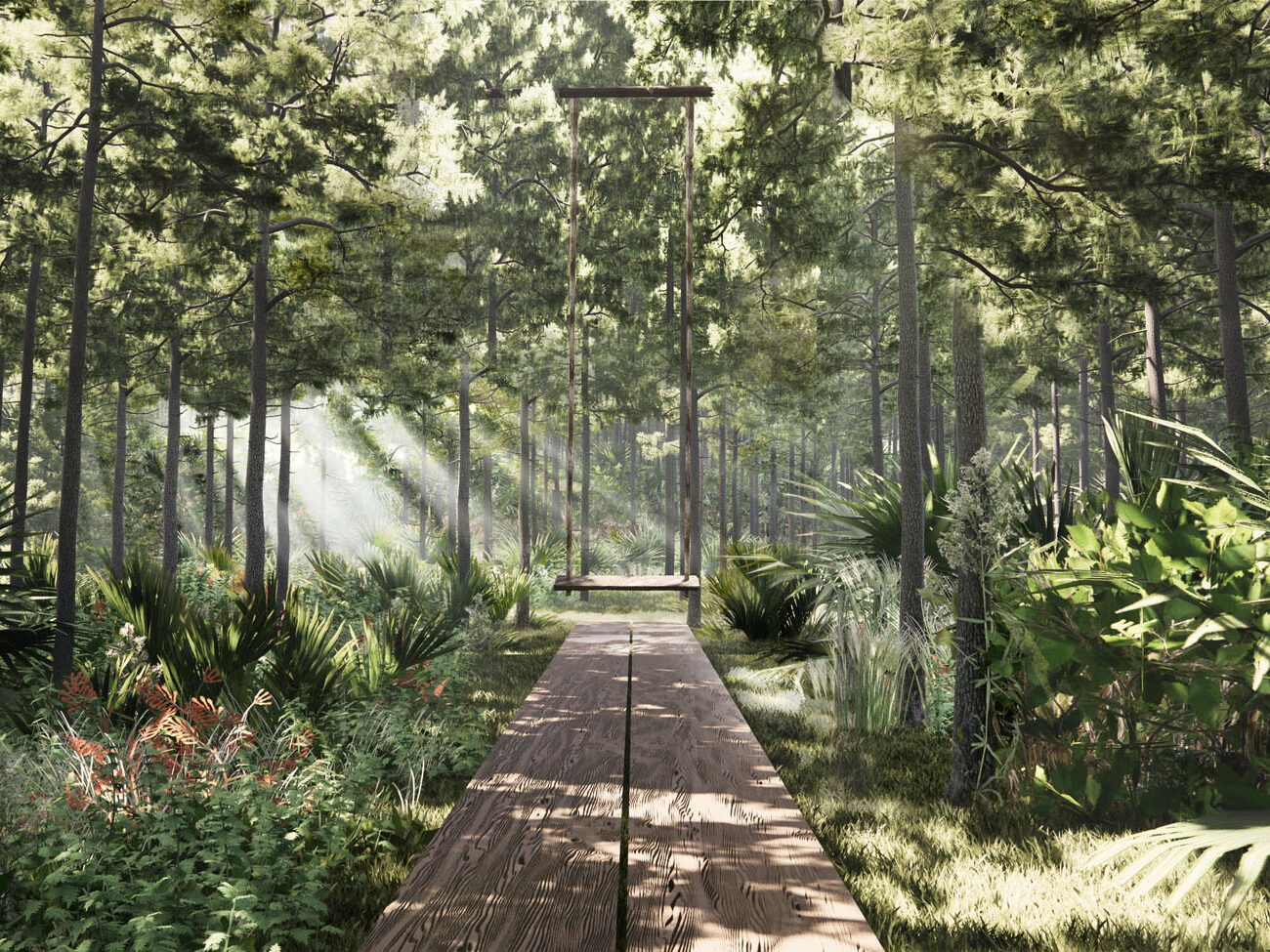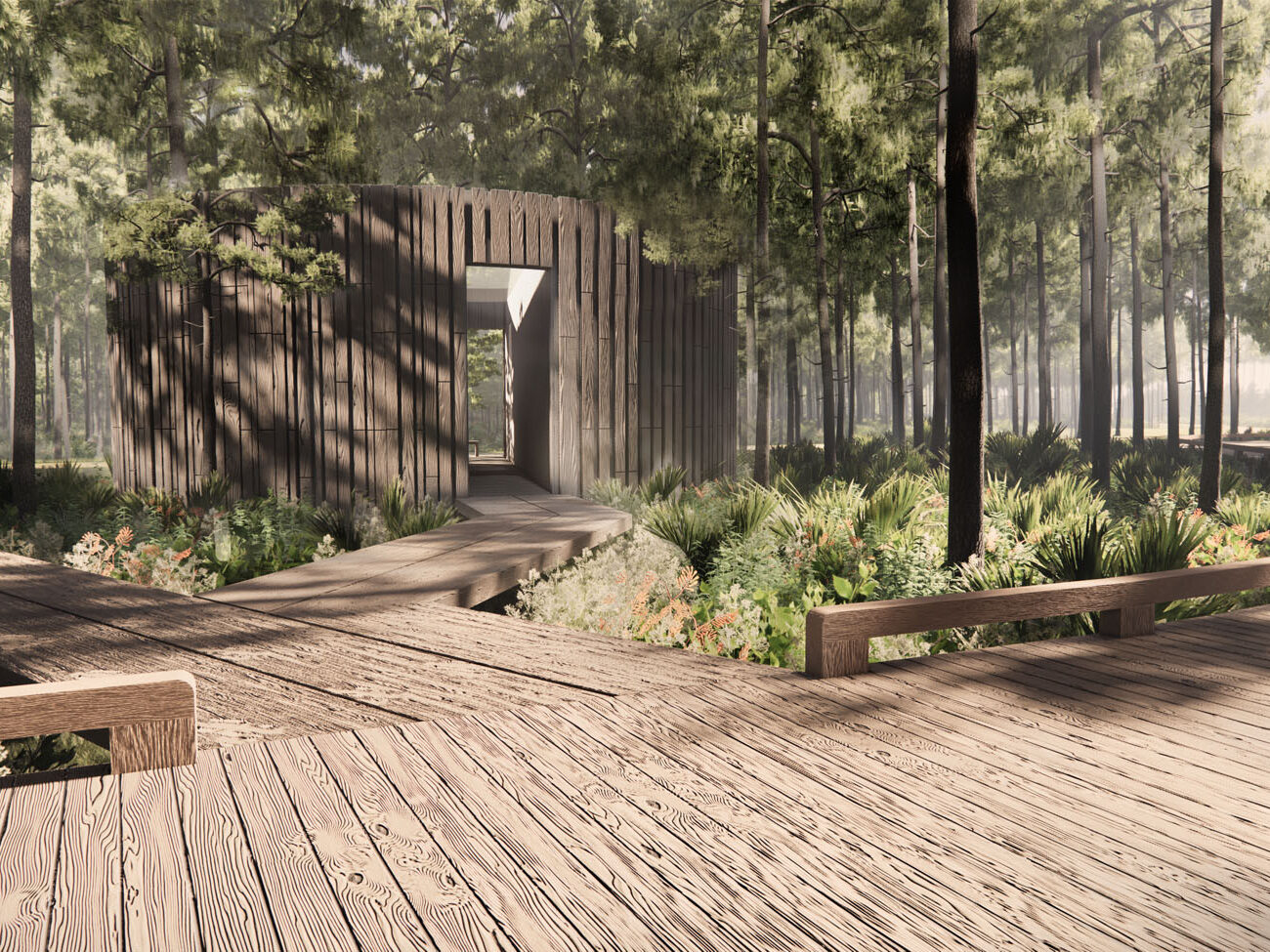Design: 2021/2024 Construction: 2024/ongoing
Situated in the Watersound Origins development, the 15.5-acre Longleaf Art Park will be a new cultural, educational, and recreational community hub in Walton County, Florida. It’s anchored by a purpose-built pavilion housing the 217-foot long Passage of Time sculpture, a significant masterwork from world-renowned artist Richard Serra. The 17,000-square-foot sculpture pavilion—OLI’s third collaboration with Serra—is a versatile gallery space, accommodating galas, lectures, and special events.
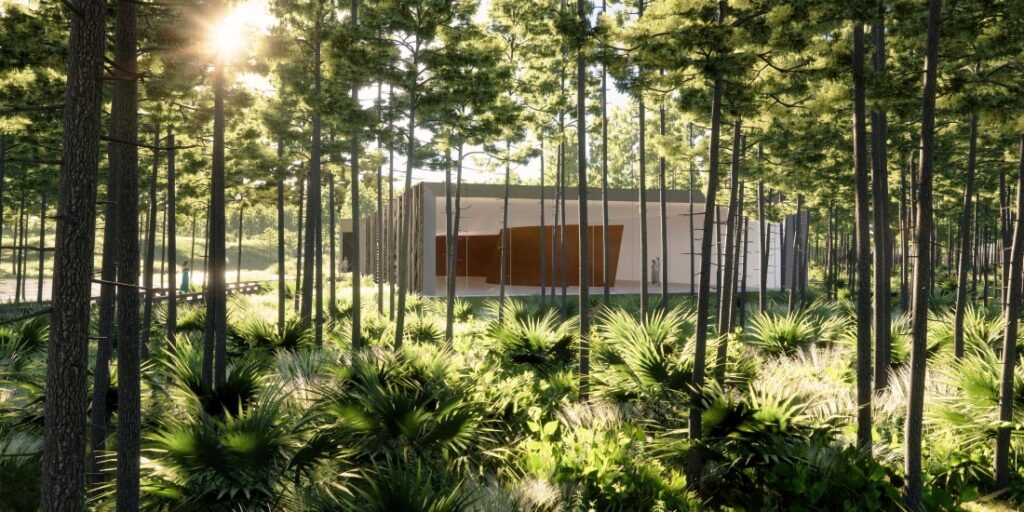
The pavilion’s design is deceptively simple yet highly engineered, carefully detailed to heighten the art experience. All amenities were placed away from the sculpture pavilion, including the reception, visitor parking, and the 20,000-square-foot event space. Strategically contoured berms, formed using fill excavated from the retention pond that protects the surrounding wetlands, visually shield the pavilion, guiding visitors on a journey of discovery.
The pavilion exposes the art piece to the tree canopy, placing it in dialogue with the landscape, and celebrates the site’s history: the native wetland and the subsequent paper-making tradition it cultivated. As with all of Serra’s site-specific works, this relationship to place is central to the experience.

Like the streams and decks that traverse the nearby wetlands, the pavilion is approached from a winding wooden deck that hovers off the ground, echoing the sculpture’s rhythmic form. The turns become more frequent approaching the pavilion, affording the viewer varying glimpses through the columns of the pine forest trunks and the pavilion façade.
The trapezoidal pavilion is entered from glass vestibules located at the concave pockets of the sculpture. The two entrances guide visitors through the pavilion, encouraging an intimate dialogue with the sculpture. From the building’s orientation to the large asymmetric pitched roof, traditional passive strategies rooted in Florida’s vernacular architecture allow for generous expanses of high-performance glazing that further deepen the connection between built form and landscape.
